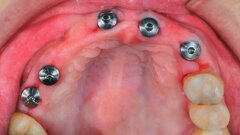The U.S. Food and Drug Administration (FDA) has approved the first-ever epinephrine nasal spray for emergency treatment of severe allergic reactions, offering a needle-free, fast-acting alternative that could revolutionize anaphylaxis management and save countless lives. This groundbreaking innovation marks the most significant advance in allergy care in over three decades.
In a pivotal development for allergy medicine, the FDA has approved the first nasal spray for the emergency treatment of type 1 allergic reactions, including anaphylaxis, in adults and children weighing at least 30 kilograms. This approval, granted on August 9, 2024, marks a significant advancement in the management of severe allergic reactions and represents the first major innovation in epinephrine delivery in over three decades.
The newly approved nasal spray, a single-dose epinephrine formulation, offers a needle-free alternative to the traditional injectable epinephrine that has long been the standard of care. This product, developed by ARS Pharmaceuticals, was fast-tracked by the FDA due to its potential to address a critical unmet need in allergy treatment. Until now, epinephrine, the first-line treatment for anaphylaxis, had only been available in injectable form, a method that, while effective, often presents challenges in terms of patient compliance and timely administration.
The FDA’s approval was underpinned by data from four key studies involving 175 adults. These studies compared the blood concentrations of epinephrine following administration of the nasal spray and the injectable form. The results were compelling: the epinephrine levels achieved by the nasal spray were comparable to those of the injection, with similar increases in blood pressure and heart rate—key indicators of the drug’s effectiveness. Additionally, studies conducted in children weighing more than 66 pounds showed that the epinephrine concentrations mirrored those seen in adults, further supporting the nasal spray’s efficacy across different age groups.
For healthcare professionals, the introduction of this nasal spray offers a transformative tool in the fight against anaphylaxis. Its ease of use is expected to enhance patient compliance, particularly in emergency situations where hesitation or fear of needles can lead to dangerous delays in treatment. The portability and simplicity of the nasal spray also ensure that patients are more likely to carry and use it when needed, reducing the risk of severe allergic reactions escalating to life-threatening levels.
Moreover, the implications of this approval extend beyond individual patient care. The availability of a needle-free epinephrine option could lead to increased public access to emergency allergy treatments in settings where injectable epinephrine might be less practical or readily available, such as in schools, restaurants, and airplanes.
However, the rollout of this new technology will require careful consideration. Ensuring widespread availability and educating both patients and healthcare providers on its proper use will be crucial. Additionally, the adoption of this new treatment modality will depend on the support of insurers and healthcare systems to cover and integrate it into existing care protocols.
In summary, the FDA’s approval of the epinephrine nasal spray represents a groundbreaking step forward in the treatment of anaphylaxis. By offering a needle-free alternative, this innovation has the potential to improve patient outcomes and broaden access to life-saving medication. As the medical community begins to incorporate this new tool into standard practice, the future of anaphylaxis management may well be redefined.
Topics:
Tags:
In a historic leap for cancer treatment, thousands of patients are set to receive cutting-edge cancer vaccines, marking the beginning of a new era in ...
In a groundbreaking move, the UK Medicines and Healthcare products Regulatory Agency (MHRA) has approved the use of CRISPR gene editing technology to treat ...
Japanese scientists are on the brink of a dental revolution with their new drug that has sparked hope for growing teeth. Clinical trials are set to begin ...
Dr. Sachin Gavali, BDS who is now pursuing his Ph.D. in Bioinformatics Data Science at the University of Delaware (USA) writes about Deep Learning and its ...
Live webinar
Wed. 14 January 2026
10:30 pm IST (New Delhi)
Dr. Théo Laplane, Dr. Robert Gottlander DDS
Live webinar
Fri. 16 January 2026
10:30 pm IST (New Delhi)
Live webinar
Mon. 19 January 2026
11:30 pm IST (New Delhi)
Philipp Kopp, Michael Seeber
Live webinar
Thu. 22 January 2026
7:30 pm IST (New Delhi)
Prof. Judith Jones D.D.S; M.P.H., Prof. Kakuhiro Fukai D.D.S., Ph.D, Dr. Bathsheba (Bethy) Turton
Live webinar
Fri. 23 January 2026
12:30 am IST (New Delhi)
Dr. Nicola M. Grande DDS, PhD
Live webinar
Wed. 28 January 2026
6:30 pm IST (New Delhi)
Live webinar
Wed. 28 January 2026
9:30 pm IST (New Delhi)
Prof. Dr. Jan-Frederik Güth



 Austria / Österreich
Austria / Österreich
 Bosnia and Herzegovina / Босна и Херцеговина
Bosnia and Herzegovina / Босна и Херцеговина
 Bulgaria / България
Bulgaria / България
 Croatia / Hrvatska
Croatia / Hrvatska
 Czech Republic & Slovakia / Česká republika & Slovensko
Czech Republic & Slovakia / Česká republika & Slovensko
 France / France
France / France
 Germany / Deutschland
Germany / Deutschland
 Greece / ΕΛΛΑΔΑ
Greece / ΕΛΛΑΔΑ
 Hungary / Hungary
Hungary / Hungary
 Italy / Italia
Italy / Italia
 Netherlands / Nederland
Netherlands / Nederland
 Nordic / Nordic
Nordic / Nordic
 Poland / Polska
Poland / Polska
 Portugal / Portugal
Portugal / Portugal
 Romania & Moldova / România & Moldova
Romania & Moldova / România & Moldova
 Slovenia / Slovenija
Slovenia / Slovenija
 Serbia & Montenegro / Србија и Црна Гора
Serbia & Montenegro / Србија и Црна Гора
 Spain / España
Spain / España
 Switzerland / Schweiz
Switzerland / Schweiz
 Turkey / Türkiye
Turkey / Türkiye
 UK & Ireland / UK & Ireland
UK & Ireland / UK & Ireland
 International / International
International / International
 Brazil / Brasil
Brazil / Brasil
 Canada / Canada
Canada / Canada
 Latin America / Latinoamérica
Latin America / Latinoamérica
 USA / USA
USA / USA
 China / 中国
China / 中国
 Pakistan / Pākistān
Pakistan / Pākistān
 Vietnam / Việt Nam
Vietnam / Việt Nam
 ASEAN / ASEAN
ASEAN / ASEAN
 Israel / מְדִינַת יִשְׂרָאֵל
Israel / מְדִינַת יִשְׂרָאֵל
 Algeria, Morocco & Tunisia / الجزائر والمغرب وتونس
Algeria, Morocco & Tunisia / الجزائر والمغرب وتونس
 Middle East / Middle East
Middle East / Middle East























































To post a reply please login or register